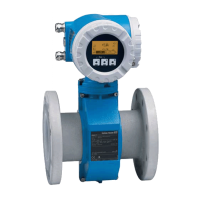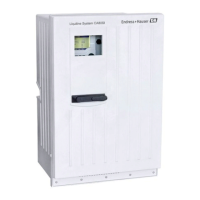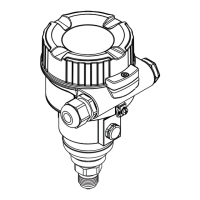Gammapilot FMG50
Endress+Hauser 29
A0018076
A Vertical beam (90°)
B Diagonal beam (30°)
C Measuring path
1 Sample point
2 Source container
3 Gammapilot FMG50
• To increase the accuracy of density measurements, the use of a collimator is recommended.
The collimator screens the detector against background radiation.
• When planning, the total weight of the measuring system must be taken into consideration.
• An FHG51 clamping device is available as an accessory
Installation conditions for
interface measurement
Conditions
For interface measurement, the Gammapilot FMG50 is typically mounted horizontally at the upper
or lower limit of the interface range. When introducing a radiation source into an immersion tube, it
is important to ensure that the measuring range is already filled with medium in order to keep the
radiation in the vicinity of the source as low as possible. When a radiation source is used in an
immersion tube, the radiation can be aligned with the measuring range of the Gammapilot FMG50
using a collimator on the immersion tube.
Measuring system arrangement
A0038167
1 Gammapilot (2 pcs)
2 Interface measurement
Description
The measuring principle is based on the fact that the radiation source emits radiation which is
attenuated when it penetrates a material and the medium to be measured. In radiometric interface
measurement, the radiation source is often introduced into a closed immersion tube via a cable
extension. This excludes the possibility of contact between the radiation source and the medium.
Depending on the measuring range and the application, one or several detectors are mounted on the
outside of the vessel. The average density of the medium between the radiation source and the
detector is calculated from the radiation received. A direct correlation to the position of the interface
can then be derived from this density value.
For more information, see:
CP01205F

